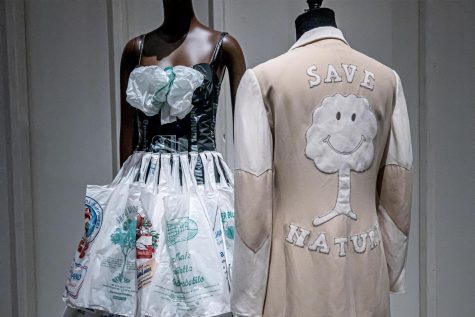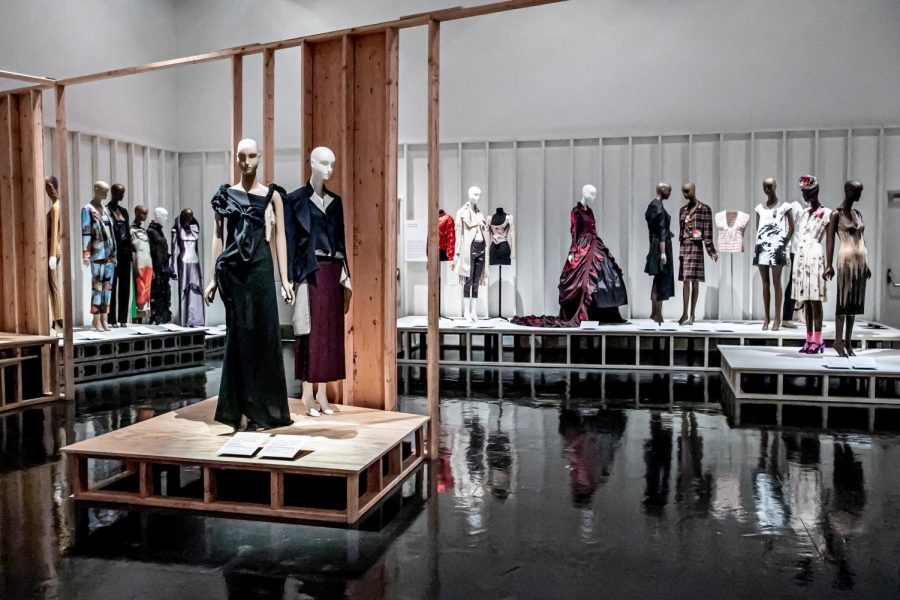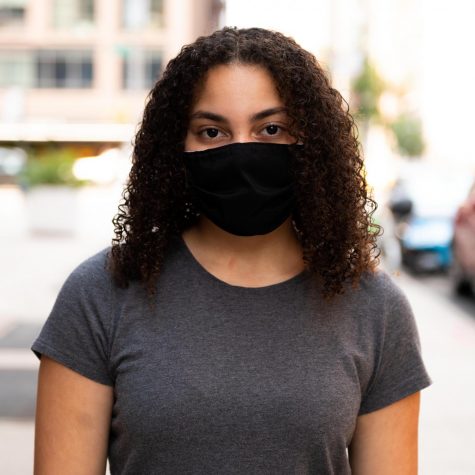The Museum at FIT showcases the ’90s as a decade of ‘Reinvention and Restlessness’
A new must-see exhibition looks back on the themes that shaped a decade in fashion.
“Reinvention and Restlessness: Fashion in the Nineties,” the current exhibit at The Museum at FIT, depicts the fashion trends of the 1990s. (Staff Photo by Ryan Walker)
February 23, 2022
2022 is all about Y2K. Walk to class and you’ll most likely see a few pairs of low-rise jeans, cargo pants and UGGs on your way. Urban Outfitters now has a category on its website titled “2000s Nostalgia.” The 20-year fashion cycle tells us that society continually picks up trends from two decades prior, which explains the phenomenon of such revivals. So with the aughts in vogue again, does this mean the ’90s are out for good? In a new exhibit, the Museum at FIT looks back on the decade and the influences that shaped it.
The Fashion Institute of Technology exhibit, titled “Reinvention and Restlessness: Fashion in the Nineties,” opened on Jan. 19. Through the medium of garments by household-name designers like Vivienne Westwood, Calvin Klein and Tom Ford, the exhibit addresses the themes that influenced fashion in the ’90s, such as “retro revivals, technology, environmentalism and reuse, and the global wardrobe.”
If you’ve never been to the Museum at FIT, you’re missing out. Located on 27th Street and 7th Avenue, it’s an easy walk from campus, and admission is free. Since I went on a Wednesday night, I didn’t have to deal with any crowds or lines like at other museums, and I could take my time reading descriptions and admiring pieces without the pressure of people standing behind me trying to do the same thing.
Located in the downstairs section of the museum, “Reinvention and Restlessness” is composed of two rooms. The first room is smaller and introduces visitors to the fashion themes of the decade, which include the unprecedented influence of television, magazines and supermodels. Along with display pieces and informational plaques, this section features small televisions that play video clips of archival footage. One played a recording of a runway show that displayed in subtitles the quote: “These are the hottest models working today — the supermodels. They are more famous than the clothes they parade down the runway.”
While the thought of ’90s supermodels brings up images of Kate Moss and the heroin-chic look, a Comme des Garçons dress displayed in the gallery shows more depth in the decade’s conceptualization of beauty. Actively defying the beauty standards of the female body reinforced by these ultra-thin models, a strategically placed lump on the bodice draws the viewer’s attention away from the mannequin’s frame.
Nonconformity is also a theme in the exhibit’s coverage of ’90s fashion magazines. While glossy mainstream publications had established themselves during the late 1980s, alternative fashion magazines such as Dazed and Confused, Purple and Visionaire also found an audience with their experimental coverage in the ’90s. These avant-garde styles are often forgotten in retrospect.
My last stop in the entry room was a two-piece suit by Franco Moschino. A button-down long-sleeve shirt and skirt with red heart-shaped buttons accent the black-and-white color scheme and form a timeless silhouette, while the words “FASHION” and “FASHOFF” wrap around the piece in huge block letters. The suit seems to comment on trends that come and go, which I think is especially fitting for an exhibit on both decade-ism and the nuances in what curator Colleen Hill called the “sometimes incongruous nature of fashion trends.”
The second room had more substance, as the variety of garments represented many different themes and movements that shaped the decade’s fashion. Pieces ranged from lavish to minimalistic, from grunge to avant-garde. A long-sleeve Vivienne Westwood corset top with a Renaissance art print on the front features incredibly intricate detail.

Another Moschino piece — a jacket featuring a “Save Nature” slogan on the back — makes a statement on the environmental movement that was gaining momentum at the time. The now-iconic Tabi shoe made an appearance, as well as an elegant pair of pink Jimmy Choo heels with furry details on the straps.
Seemingly simple Calvin Klein pieces were still stunning in the quality and detail of their craftsmanship, but I could also picture some of the more out-there pieces on people in New York today — and I think that is part of the beauty of this city. You can wear whatever you want, and no one really cares because you fit in by standing out.
Before my time at the exhibit, the ’90s would have conjured images of Pinterest boards of “Friends” characters wearing mom jeans, grungy flannel shirts and Delia’s catalogues. Perhaps my biggest takeaway from my experience at the exhibit was the fact that fashion isn’t just being able to find the coolest item at a thrift store or arranging the most complementary colors in your outfit. Knowing fashion is knowing movements and the thought processes of designers who revolutionized the industry. Knowing fashion is intricate and complex and something I respect more than ever before.
This must-see exhibit is free and open to the public until April 17 on Wednesdays, Thursdays and Fridays from noon to 8 p.m., and 10 a.m. to 5 p.m. on Saturdays and Sundays. I strongly recommend it to anyone wanting to add some nuance to their perception of ’90s fashion.
Contact Carina Christo at [email protected].

























































































































































